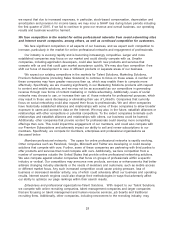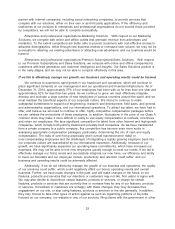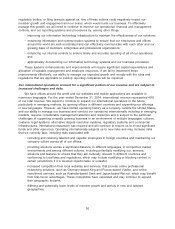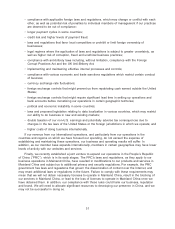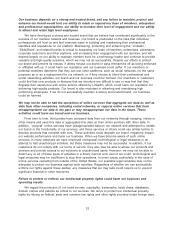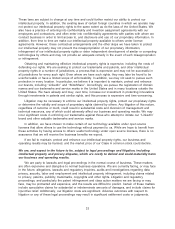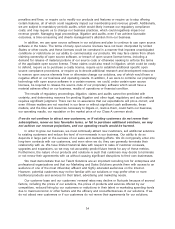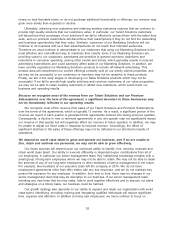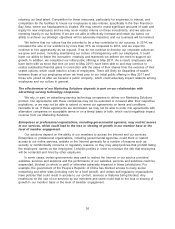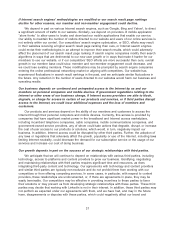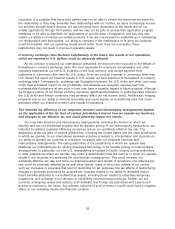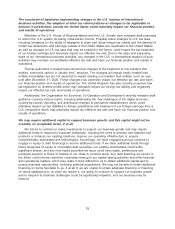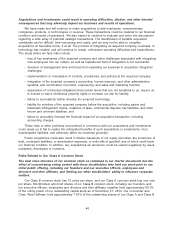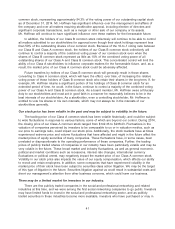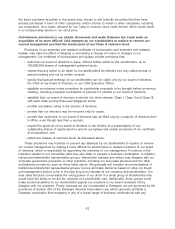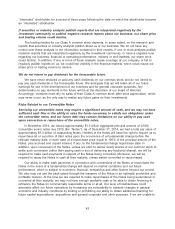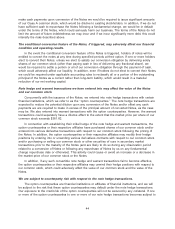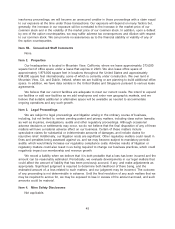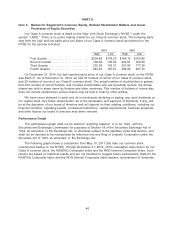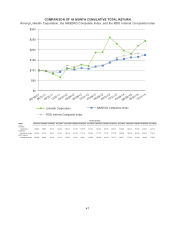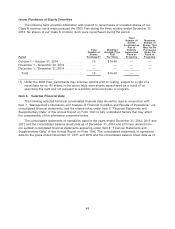LinkedIn 2014 Annual Report Download - page 40
Download and view the complete annual report
Please find page 40 of the 2014 LinkedIn annual report below. You can navigate through the pages in the report by either clicking on the pages listed below, or by using the keyword search tool below to find specific information within the annual report.reputation. It is possible that these third parties may not be able to devote the resources we expect to
the relationship or they may terminate their relationships with us. Further, as users increasingly access
our services through mobile devices, we are becoming more dependent on the distribution of our
mobile applications through third parties, and we may not be able to access their application program
interfaces or be able to distribute our applications or provide ease of integration, and this may also
impact our ability to monetize our mobile products. If we are unsuccessful in establishing or maintaining
our relationships with third parties, our ability to compete in the marketplace or to grow our business
could be impaired, and our operating results would suffer. Even if we are successful, these
relationships may not result in improved operating results.
If currency exchange rates fluctuate substantially in the future, the results of our operations,
which are reported in U.S. dollars, could be adversely affected.
As we continue to expand our international operations, we become more exposed to the effects of
fluctuations in currency exchange rates. We incur expenses for employee compensation and other
operating expenses at our non-U.S. locations in the local currency, and accept payment from
customers in currencies other than the U.S. dollar. Since we conduct business in currencies other than
U.S. dollars but report our financial results in U.S. dollars, we face exposure to fluctuations in currency
exchange rates. Consequently, exchange rate fluctuations between the U.S. dollar and other currencies
could have a material impact on our profitability, and because we recognize revenue over time,
exchange rate fluctuations at one point in time may have a negative impact in future quarters. Although
we hedge a portion of our foreign currency exposure, significant fluctuations in exchange rates between
the U.S. dollar and foreign currencies may adversely affect our net income (loss). Additionally, hedging
programs rely on our ability to forecast accurately and could expose us to additional risks that could
adversely affect our financial condition and results of operations.
The intended tax efficiency of our corporate structure and intercompany arrangements depend
on the application of the tax laws of various jurisdictions and on how we operate our business,
and changes to our effective tax rate could adversely impact our results.
Our corporate structure and intercompany arrangements, including the manner in which we
develop and use our intellectual property and the transfer pricing of our intercompany transactions, are
intended to optimize business efficiency as well as reduce our worldwide effective tax rate. The
application of the tax laws of various jurisdictions, including the United States and the other jurisdictions
in which we operate, to our international business activities is subject to interpretation and depends on
our ability to operate our business in a manner consistent with our corporate structure and
intercompany arrangements. The taxing authorities of the jurisdictions in which we operate may
challenge our methodologies for valuing developed technology or for transfer pricing on intercompany
arrangements. In particular, our non-U.S. headquarters is located in Dublin, Ireland, but tax authorities
in other jurisdictions where we operate may make a determination that the manner in which we operate
results in our business not achieving the intended tax consequences. This could increase our
worldwide effective tax rate and harm our financial position and results of operations. Our effective tax
rate could be adversely affected by several other factors, many of which are outside of our control,
such as: increases in expenses that are not deductible for tax purposes, the tax effects of restructuring
charges or purchase accounting for acquisitions, changes related to our ability to ultimately realize
future benefits attributed to our deferred tax assets, including those related to other-than-temporary
impairment, and a change in our decision to indefinitely reinvest foreign earnings. Further, we are
currently undergoing review and audit by both domestic and foreign tax authorities and expect such
actions to continue in the future. Any adverse outcome of such a review or audit could have a negative
effect on our operating results and financial condition.
38


